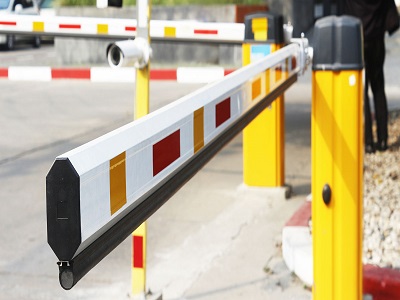
BOOM BARRIER
Boom barriers are typically used for controlling vehicular access at various entry and exit points such as parking lots, toll booths, checkpoints, and gated communities. They are designed to block or allow access to vehicles based on authorization, usually through a remote control, access card, or license plate recognition system.
If you're interested in purchasing or installing boom barriers, you can search for suppliers or service providers in your area who specialize in security systems, access control, or traffic management equipment. Additionally, you may want to consider factors such as the size of the area you need to secure, the level of traffic flow, and any specific features or integrations you require, such as RFID readers or ticketing systems.
Flap Barrier: Flap barriers are used in pedestrian control applications, such as entrances to metro stations, office buildings, and amusement parks. They consist of wings or flaps that retract into the barrier unit to allow passage upon authorization (e.g., ticket validation, access card recognition). Flap barriers effectively manage flow while providing a deterrent to unauthorized entry.
Swing Barrier: Similar to flap barriers, swing barriers control pedestrian access but feature swinging doors or arms instead of retractable flaps. They can accommodate a wider passage area, making them suitable for ADA-compliant accessibility and the movement of goods or equipment. Swing barriers are versatile and can be integrated with various authentication systems.
Swing Gate: Swing gates are movable barriers that swing open or closed to control access. They can be used for both pedestrian and vehicular control, ranging from simple garden gates to large, industrial-grade gates for secure facilities. Swing gates can be operated manually or equipped with automated systems for remote or sensor-triggered openings.
Bollards: Bollards are sturdy, vertical posts installed to control or direct road traffic, protect pedestrians, and prevent vehicular access to certain areas. They vary in design from simple, functional posts to decorative elements integrated into urban architecture. Bollards can be fixed, retractable, or impact-resistant to stop vehicles forcefully.


